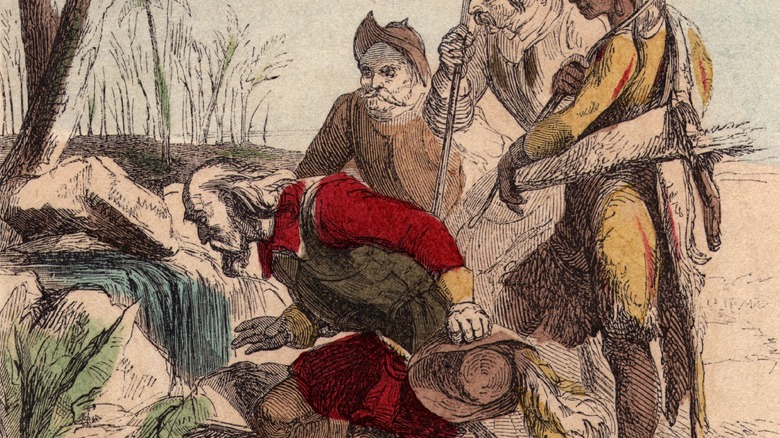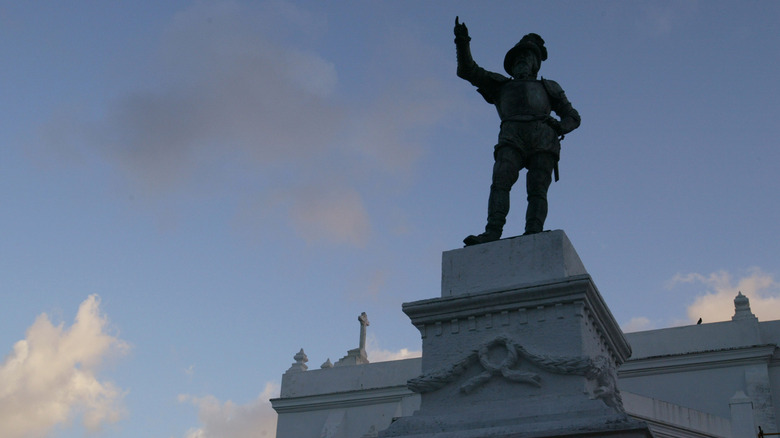How Ponce De Leon Brought Florida Into The Spanish Empire
Much of Spain's expansion into the Americas in the 16th century was thanks to conquistador Ponce de León and his knack for suppressing the revolts of the people the empire enslaved in order to do so. However, in 1511 his bitter feud with Christopher Columbus' son, who had recently taken over dad's job as governor of Hispaniola, resulted in his ouster from the governorship of the very island he'd worked so hard to colonize.
However, as Biography notes, King Ferdinand still had a soft spot for de León. He did snag Puerto Rico in the name of Spain after all. So in 1512, he gave the explorer the go-ahead to once again expand the empire and its coffers. In the end, getting the boot from Puerto Rico turned out to be a pretty good deal for de León. He was promised exclusive rights to govern any land he acquired for Spain. De León set sail from Puerto Rico with three ships and over 200 crewmen in March 1513. Their expected destination: an island known as Bimini, which was rumored to be the location of the fabled "fountain of youth." If the fountain were indeed his goal, de León didn't make much mention of it. The royal orders authorizing his expedition contained no references to the mythological spring. More recent research as revealed that the association of the explorer with the quest for fountain of youth wasn't made until after de León's death.
Ponce de Leon first thought Florida was an island
After about a month of sailing northwest from Puerto Rico, de Leon's expedition spotted what they initially believed to be an island. When they landed, he called dibs, of course, and set about naming the place. According to History.com, he decided on Florida as a reference to the Easter holiday, which is sometimes called "Pascua Florida" in Spanish. The word means "flowery," so it also served to highlight the verdant landscape he had "discovered." He did a coastal exploration of the peninsula, in the process discovering the Gulf Stream, which in turn helped further Spain's expansion into the Americas.
After returning to Spain to be granted a military governorship of Florida and Bimini, de León embarked on his second expedition in early 1521. While the details of what went down on that second trip are not clear, historians believe that de León was wounded during an attack by Native Americans in July of that year. He had received an arrow to the leg, so he sailed to Havana, Cuba, for treatment, but was unable to pull through. He died, but the foothold he dug allowed Spain to extend its colonial reach into Florida, which it would hold until the 19th century (not including the two decades in the 18th in which it was under British rule). Oh, and as you can deduce from the fact that he died, de León never found the mythical fountain of youth.

